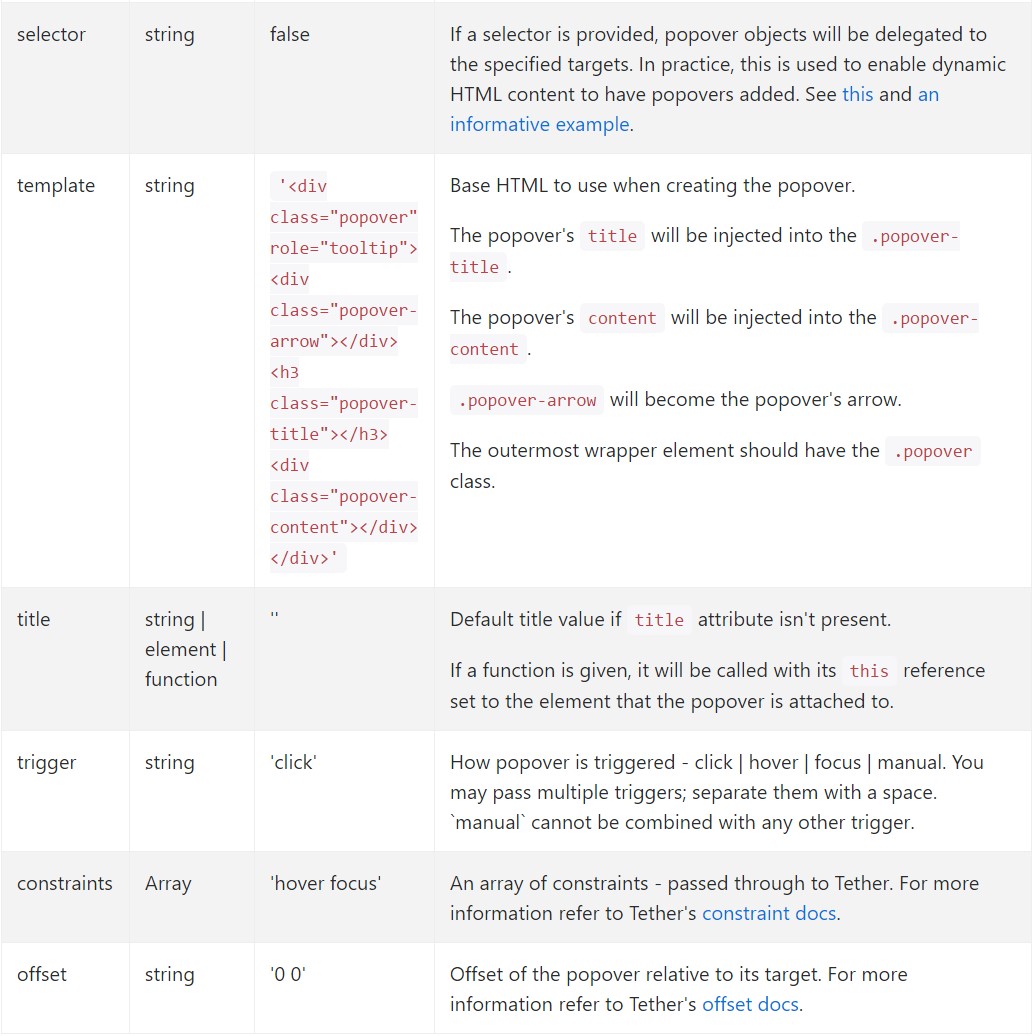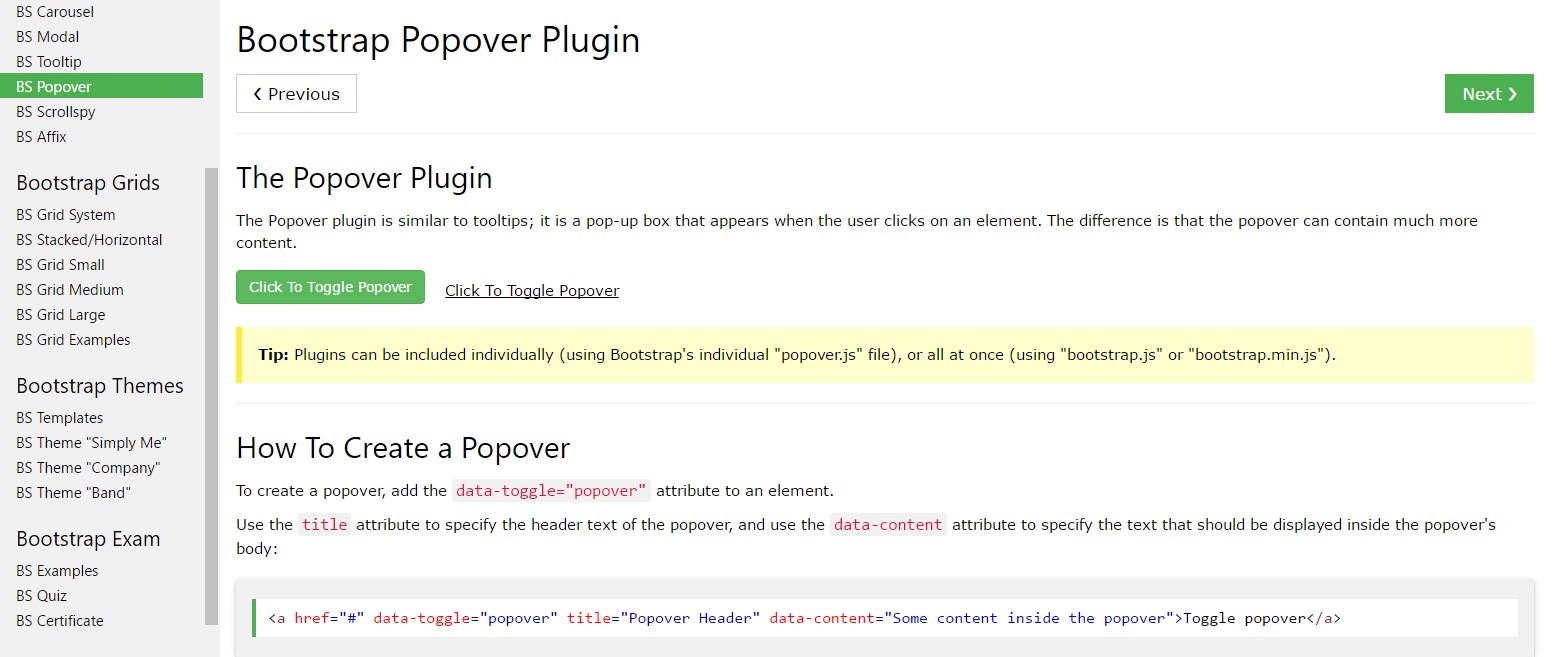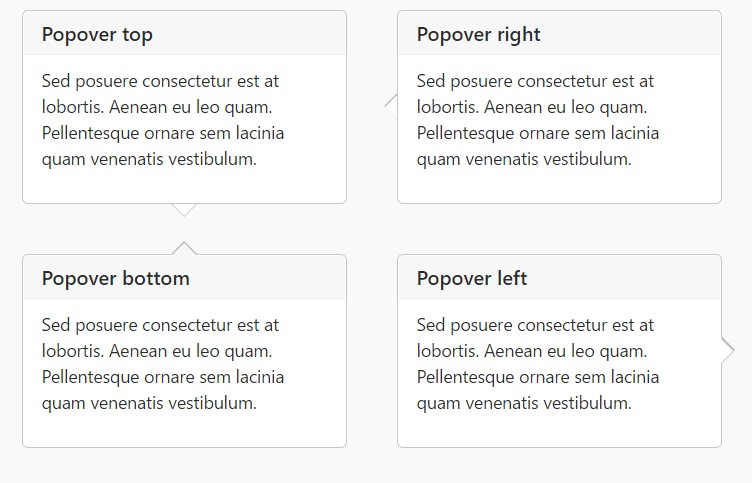Bootstrap Popover Container
Overview
The versions
Bootstrap is one of the most useful and free open-source platforms to develop websites. The latest version of the Bootstrap platform is known as the Bootstrap 4.
Use of the Bootstrap 4
By using Bootstrap 4 you may develop your website now much faster than ever before. In addition, it is comparatively incredibly much easier to employ Bootstrap to develop your site than other types of systems. By having the integration of HTML, CSS, and JS framework it is among the absolute most leading systems for website development.
Certain components and secrets in Bootstrap 4
A couple of the most recommended functions of the Bootstrap 4 include:
• An improvised grid system which permits the user to get mobile device friendly sites using a fair level of ease.
• A number of utility instruction sets have been involved in the Bootstrap 4 to promote uncomplicated studying for novices in the field of website creation.
Facts to notice
Step 2: Rewrite your article by highlighting words and phrases.
Along with the start of the brand-new Bootstrap 4, the connections to the older version, Bootstrap 3 have not been absolutely removed. The developers have made certain that the Bootstrap 3 does get periodic improve and error resolve as well as renovations. It will be accomplished even after the end release of the Bootstrap 4. Bootstrap 3 have not been completely cut off. The developers have assured that the Bootstrap 3 does get regular improve and bug fixes along with improvements.
Contrasts between Bootstrap 4 and Bootstrap 3
• The assistance for various web browsers along with operating systems has been incorporated in the Bootstrap 4
• The global scale of the font style is improved for convenient reading and web site development experience
• The renaming of numerous elements has been completed to make sure a much faster and even more trusted web development method
• By using new customizations, it is achievable to develop a more active site with low efforts
Bootstrap Popover Content
And right now let all of us get to the main material.
In the case that you need to put in various extra details on your site you can surely apply popovers - simply just add little overlay content.
The best way to utilize the popover plugin:
- Bootstrap Popover Options depend upon the 3rd party library Tether for locating. You have to include tether.min.js prior to bootstrap.js straight for popovers to do the job!
- Popovers require the tooltip plugin considering that a dependence .
- Popovers are opt-in for functionality factors, and so you need to initialize them yourself.
- Zero-length
titlecontent- Indicate
container:'body'- Triggering popovers on hidden components will definitely not do the job.
- Whenever caused directly from website links that span several lines, popovers will certainly be centered. Apply
white-space: nowrap;<a>Did you found out? Great, let us observe ways in which they work along with some illustrations. ( useful reference)
You must incorporate tether.min.js before bootstrap.js in turn for popovers to function!
Good example: Implement popovers anywhere
One tactic to activate all popovers in a web page would undoubtedly be to select all of them by their
data-toggle$(function ()
$('[data-toggle="popover"]').popover()
)For example: Making use of the container feature
Every time you have some designs on a parent component which meddle with a popover, you'll want to specify a custom-made
container$(function ()
$('.example-popover').popover(
container: 'body'
)
)Static popover
Four choices are readily available: top, right-handed, lowest part, and left adjusted.
Live demonstration

<button type="button" class="btn btn-lg btn-danger" data-toggle="popover" title="Popover title" data-content="And here's some amazing content. It's very engaging. Right?">Click to toggle popover</button>Four orientations

<button type="button" class="btn btn-secondary" data-container="body" data-toggle="popover" data-placement="top" data-content="Vivamus sagittis lacus vel augue laoreet rutrum faucibus.">
Popover on top
</button>
<button type="button" class="btn btn-secondary" data-container="body" data-toggle="popover" data-placement="right" data-content="Vivamus sagittis lacus vel augue laoreet rutrum faucibus.">
Popover on right
</button>
<button type="button" class="btn btn-secondary" data-container="body" data-toggle="popover" data-placement="bottom" data-content="Vivamus
sagittis lacus vel augue laoreet rutrum faucibus.">
Popover on bottom
</button>
<button type="button" class="btn btn-secondary" data-container="body" data-toggle="popover" data-placement="left" data-content="Vivamus sagittis lacus vel augue laoreet rutrum faucibus.">
Popover on left
</button>Dismiss upon coming click
Put into action the
focusSpecialised markup required for dismiss-on-next-click
For effective cross-browser and cross-platform behavior, you need to apply the
<a><button>tabindex
<a tabindex="0" class="btn btn-lg btn-danger" role="button" data-toggle="popover" data-trigger="focus" title="Dismissible popover" data-content="And here's some amazing content. It's very engaging. Right?">Dismissible popover</a>$('.popover-dismiss').popover(
trigger: 'focus'
)Utilising
Set up popovers using JavaScript
$('#example').popover(options)Features
Options can be completed through data attributes or else JavaScript. For information attributes, add the option name to
data-data-animation=""

Details attributes for various popovers
Selections for particular popovers are able to additionally be indicated with the application of data attributes, as described above.
Methods
$().popover(options)
Initializes popovers for the element compilation.
.popover('show')
Reveals an element's popover. Come back to the caller just before the popover has actually been revealed (i.e. before the shown.bs.popover
event happens). This is considered a "manual" triggering of the popover. Popovers whose both title and web content are zero-length are never featured.
$('#element').popover('show')
.popover('hide')
Hides an element's popover. Returns to the caller right before the popover has actually been disguised (i.e. just before the hidden.bs.popover
activity happens). This is looked at a "manual" triggering of the popover.
$('#element').popover('hide')
.popover('toggle')
Activate an element's popover. Comes back to the caller before the popover has actually been revealed or covered (i.e. before the shown.bs.popover
or hidden.bs.popover
activity happens). This is regarded a "manual" triggering of the popover.
$('#element').popover('toggle')
.popover('dispose')
Hides and wipes out an element's popover. Popovers that employ delegation (which are generated making use of the selector possibility) can not be separately gotten rid of on descendant trigger components.
$('#element').popover('dispose')
Events

$('#myPopover').on('hidden.bs.popover', function ()
// do something…
)
Take a look at several on-line video training about Bootstrap popovers
Linked topics:
Bootstrap popovers authoritative records

Bootstrap popovers tutorial

Bootstrap Popover trouble

$().popover(options)
Initializes popovers for the element compilation.
$().popover(options).popover('show')
Reveals an element's popover. Come back to the caller just before the popover has actually been revealed (i.e. before the .popover('show')shown.bs.popover$('#element').popover('show').popover('hide')
Hides an element's popover. Returns to the caller right before the popover has actually been disguised (i.e. just before the .popover('hide')hidden.bs.popover$('#element').popover('hide').popover('toggle')
Activate an element's popover. Comes back to the caller before the popover has actually been revealed or covered (i.e. before the .popover('toggle')shown.bs.popoverhidden.bs.popover$('#element').popover('toggle').popover('dispose')
Hides and wipes out an element's popover. Popovers that employ delegation (which are generated making use of the selector possibility) can not be separately gotten rid of on descendant trigger components.
.popover('dispose')$('#element').popover('dispose')Events

$('#myPopover').on('hidden.bs.popover', function ()
// do something…
)Take a look at several on-line video training about Bootstrap popovers
Linked topics:
Bootstrap popovers authoritative records

Bootstrap popovers tutorial

Bootstrap Popover trouble

